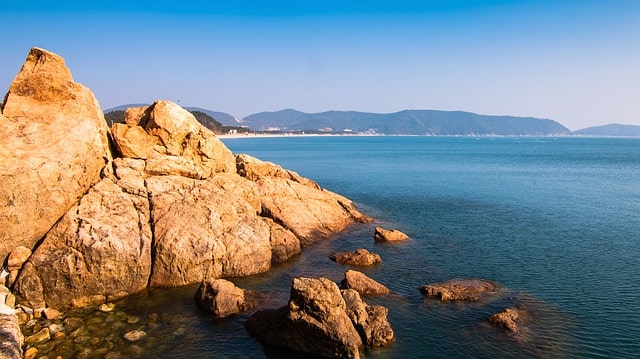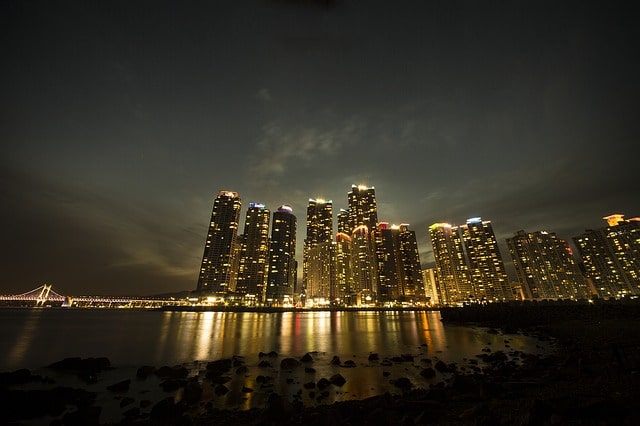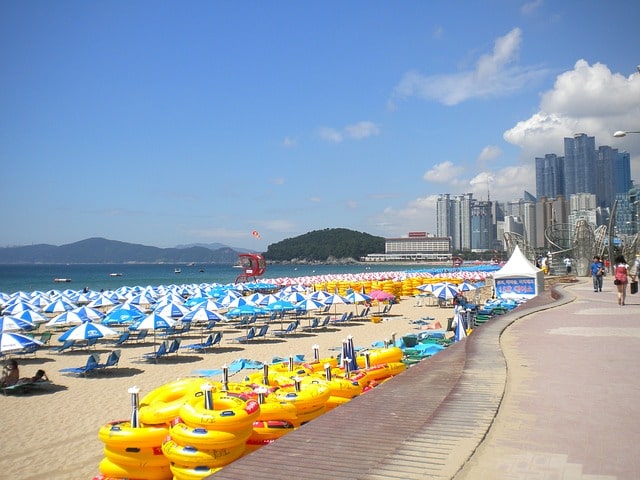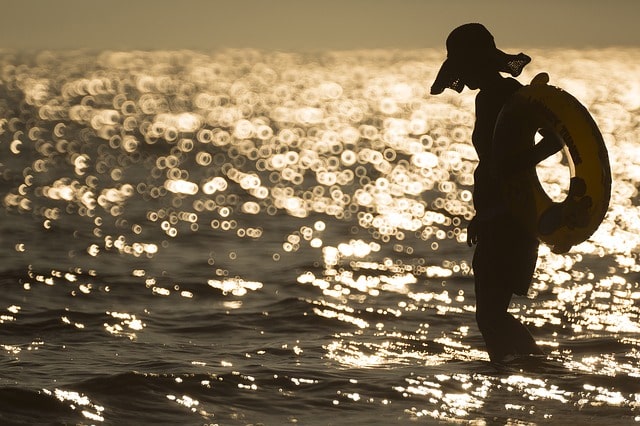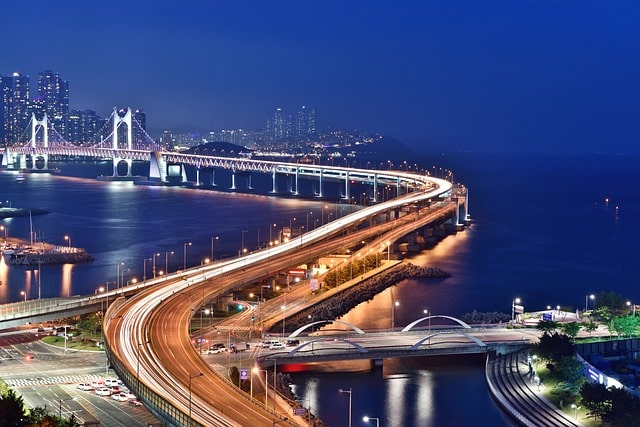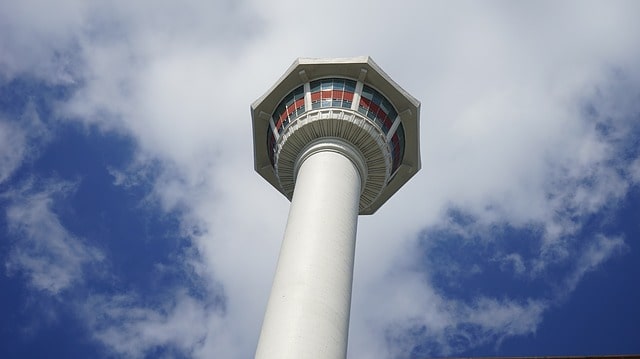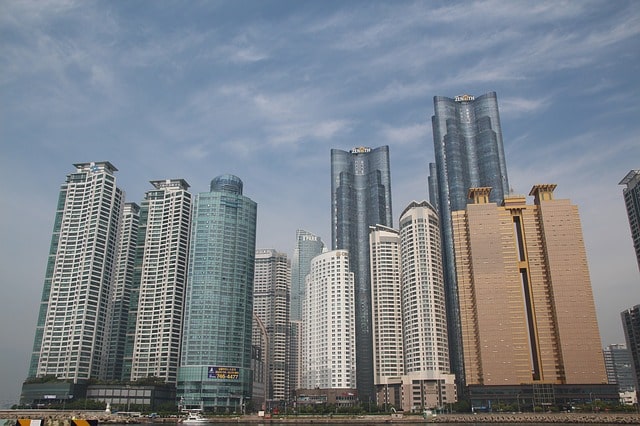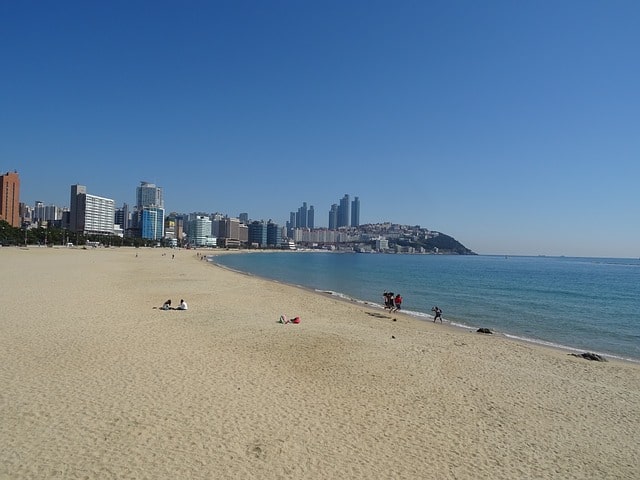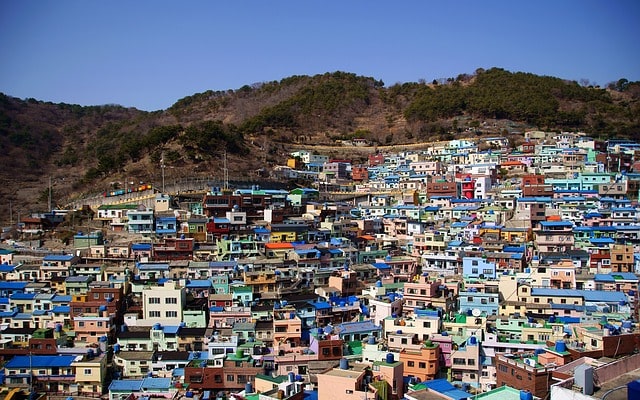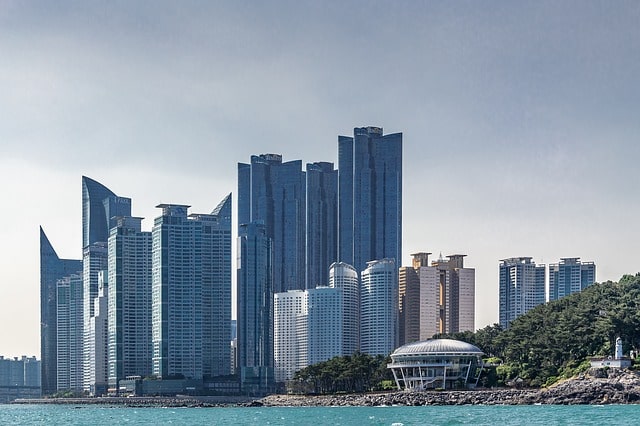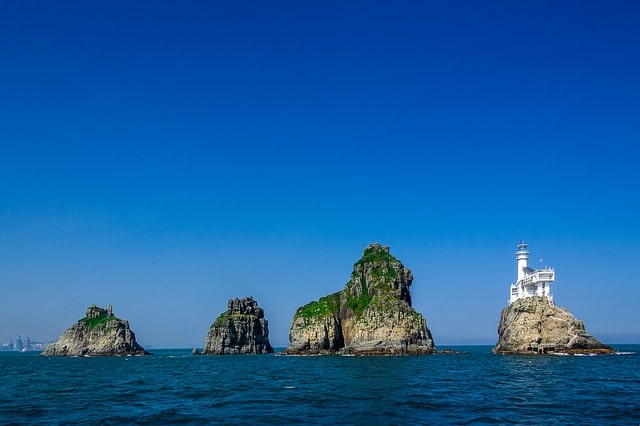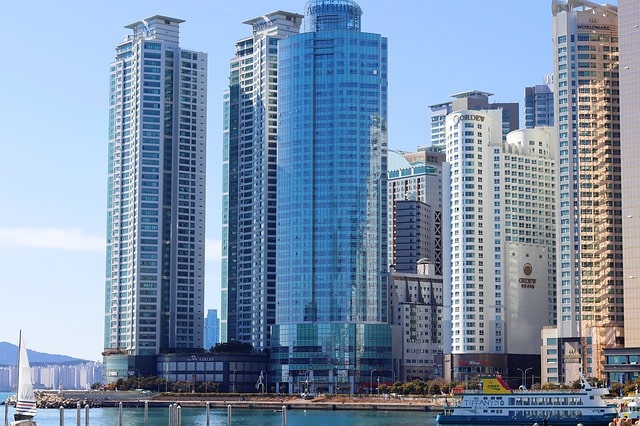Busan is one of the most relaxing and peaceful cities in South Korea. In fact, both the locals and visitors from this country who want to make a getaway to disconnect choose this destination without any doubts.
Busan
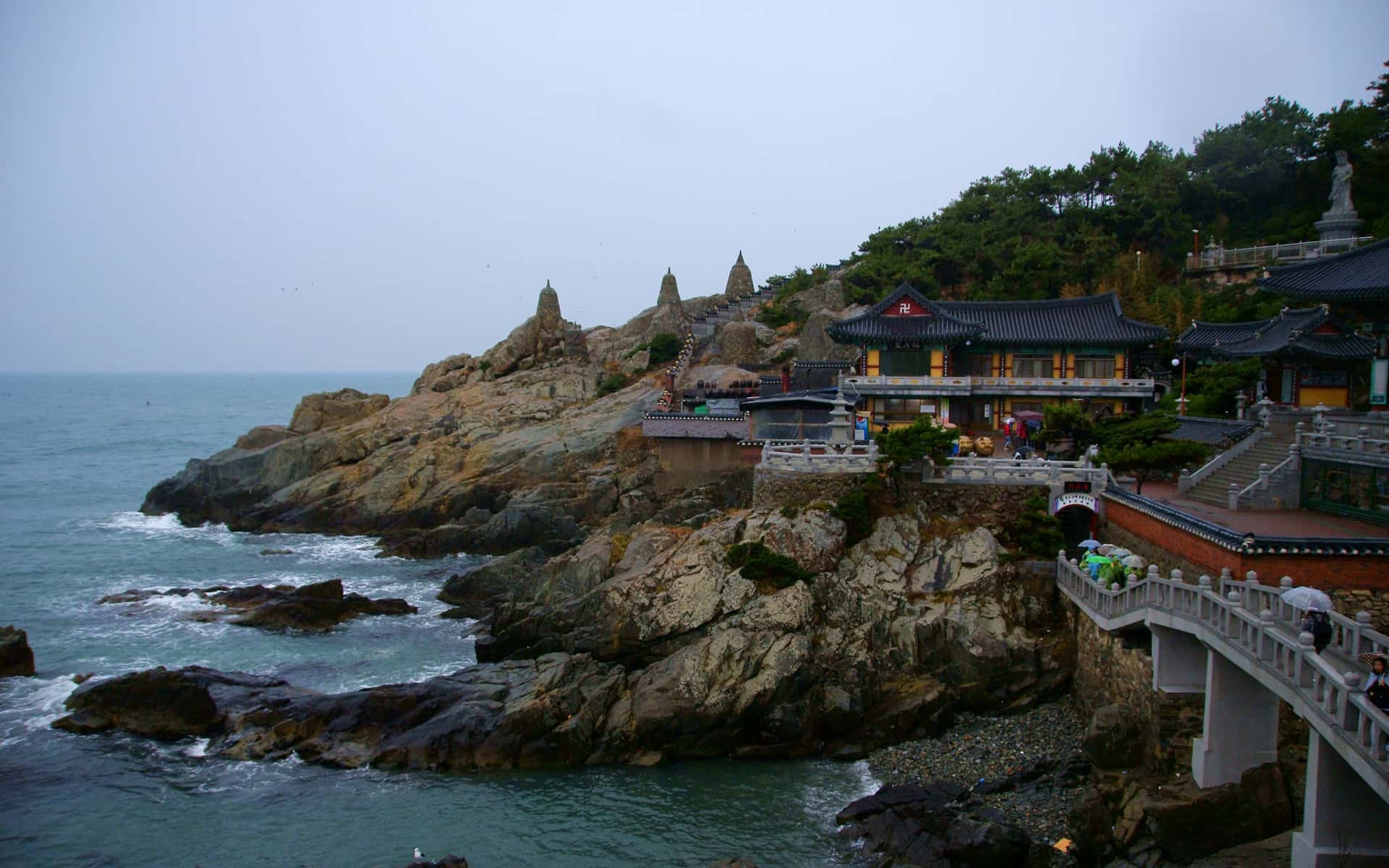
Busan in Busan (South Korea)
Busan guide
What to do in Busan
Acercarse al Nirvana en las montañas
Ubicado en las laderas del monte, el Templo Beomeosa se encuentra rodeado de una enigmática leyenda. Se dice que este templo del Pez Celestial está levantado sobre un pozo de oro que nunca se seca, por lo que crea una atmósfera sagrada y etérea a su alrededor. Su entorno está poblado por flora brillante muy sugerente: en primavera encontrarás flores de lavanda y, en otoño, un hermoso follaje. Camina hasta la cima del pico Godang y te encontrarás por encima de las nubes. También puedes participar en diferentes ceremonias budistas.
Disfrutar del parque Taejongdae
El parque Taejongdae es un área de recreación en Busan, famosa por su preciosa playa de rocas, faros históricos, templos sagrados y el increíble South Port Viewing Point, que es observatorio y parque de diversiones a la vez. Puedes escalar los acantilados de Yeongdo-gu o embárcarte en un crucero desde el puerto para adquirir una experiencia inolvidable. Si eliges un día claro para visitarlo, podrás ver la isla japonesa de Tsushima. Eso sí, enfúndate en varias capas de ropa para evitar la humedad y el riesgo de catarro.
Surfear y bañarse en Haeundae
La playa Haeundae ofrece kilómetros de arena blanca, sombrillas rojas y blancas bien alineadas, aguas preciosas y una estampa que no parece propia de Corea del Sur. Sin duda, es la playa más famosa de este país, premiada con un sol perpetuo, temperaturas agradables y actividades marinas como esquí acuático y parasailing. En invierno, esta playa tiene su propia versión del impactante "baño polar".
Contemplar el budismo en Haedong Yonggung
El templo de Haedong Yonggung es un rincón perfecto para experimentar la sabiduría del budismo con perspectivas propias de la contemplación filosófica. Además, te ofrece la posibilidad de admirar la belleza natural de Busan desde un observatorio inmejorable. Construido en 1300, incluye pagodas doradas, estaturas históricas del zodiaco chino y aguas turquesas bellísimas.
Saborear los frutos del mar
El mercado de pescado de Jagalchi no es un mercado nocturno, sino más bien un bazar. Es el lugar perfecto para degustar un gran marisco fresco, la cocina local, platos exóticos e impresionantes placeres para los cinco sentidos. Encontrarás puestos que venden carne seca, pulpos vivos y crustáceos que nunca antes habías visto. Anímate a comer sopa caliente de pescado, mariscadas, anguilas fritas y toneladas de kimchi fresco. Por último, observa los barcos pesqueros y las vistas del mar desde el muelle mientras digieres estos manjares.
Food in Busan
Busan is an enthusiast's dream. From sparkling shellfish on the beach to refreshing ice creams topped with fresh fruit, the city has plenty to eat.
Ssiat hotteok
This is Busan's special version of hotteok, a hybrid of pancake and Korean donuts. Small balls of dough are fried and crushed with a special tool, then the siatteok is plentifully filled with brown sugar syrup and a mixture of chopped nuts and seeds, and served hot. The best place to try this iconic Busan delicacy is BIFF Square, where hotteoks tend to be a bit fatter and stupider. To find a street stall that sells it, it only follows the sound of sizzling oil and the smell of sweet milkshake.
Odeng
The fish cakes (eomuk) made in Busan are exported to all of Korea. They are known to be especially delicious thanks to the abundance of fresh seafood from the port city. Concertinaed on skewers and cooked in hot broth (eomukguk), they are known as odeng. You can find them at street food stalls throughout the city, at subway stations, or you can go to the oldest fish cake maker in Busan, Samjin. The main store of Samjin is located in Yeongdo, and they also have an exit conveniently located inside the Busan station.
Dwaeji gukbap
Hot and plentiful, dwaeji gukbap is a rich soup made with boiling pork bones for several hours until a milky broth is produced, and then adds pork leg, soy sauce, rice wine, miso and oil of sesame and finally the vegetables. Dwaeji gukbap is a specialty of Busan that is served with rice (the soup is usually poured over this) and a series of side dishes. It is said to be good for the invalids, so it is the perfect meal if you feel fragile after the excessive indulgence in Busan's vibrant nightlife. There are many excellent gukbap restaurants in the city, but for the full experience head to Gukbap Alley in Seomyeon, where you can choose from an alley of gukbaprestaurantes, all of which are tasty, cheap and emit fragrant soup aromas. If you prefer beef to pork, head to Haeundae's Beef Gukbap Alley.
Jogae gui
Jogae gui, or grilled clams, is a delicacy that is best enjoyed with beer, soju and some friends at one of the Taejongdae clam shops. The tents are located on the tip of Yeongdo Island, and the seafood is ultra fresh, so fresh, in fact, that you can see clams and mussels collected from the water only 50 meters away. The prices are more or less the same in all the tents, and all serve the same food: seafood, prawns and gaebul that is roasted on the table. It is a culinary experience that is well worth the bus ride from other parts of the city.
Milmyeon
Milmyeon is a dish much loved by the busanitas on a hot summer day. It consists of long, thin noodles of cold wheat, and it comes in two varieties: the bibim milmyeon is dry, with a spicy gochujang sauce, and the mul milmyeon is less spicy and is served in a chicken or beef broth. In very hot climates, the soup may contain ice cubes to cool you even more. Try a very good version at Gaya Milmyeon: there are some outlets for this family business in the city, including one at the tourist point of Haeundae.
Ggom jangeo
Another seafood experience you should try in Busan is Jagalchi Market. It is known for its very good ggom jangeo, or grilled eel. Choose your Anguilla at one of the many stalls on the ground floor, then put it in a restaurant on the top floor and prepare it. Do not forget to take a look at the market while it is there: it is the largest seafood market in Korea, and many rare and wonderful creatures can be seen for sale.
Bingsu
A high mound of shaved ice is covered with sweetened condensed milk, sweet rice cakes and other ingredients that may include fresh fruit, fruit syrup, red bean paste and whipped cream. Bingsu (known as patbingsu if the recipe includes red bean paste) is a dessert that couples often share as an appointment activity, as it usually comes in large portions. Eat it at Gamcheon Culture Village: the town is full of coffee shops, they all have their own version of dessert.
Samgyeopsal
Some of the best steaks in the city can be found in An Ga in Haeundae. Cook delicious pieces of samgyeopsal (slices of thinly sliced pork) on a grill at your table, and enjoy the sizzling meat wrapped in thick lettuce leaves, with a hint of spicy gochujang sauce. Lots of side dishes are also available.
Where to stay in Busan
Relax in Haeundae Guesthouse, an ideal place for backpackers that has an affordable price. Also the Elysee Hotel is a good mid-range alternative. If you are looking for luxury, the Haeundae Grand Hotel is a splendid choice.
Interesting neighborhoods in Busan
Haeundae-gu is located east of the city. It is the most accessible beach area for tourists and also has a great hiking trail in Jangsan Mountain. Ideal to have a good time!
Nam-gu is a district full of bars, cheap restaurants and small clubs or pubs attended by many university students and young natives.
Dongnae-gu is a quiet, relaxing and distinguished neighborhood that houses the excellent Hurshimchung Spa.
Climate in Busan
In Busan, the summers are short, warm, muggy, wet, and mostly cloudy and the winters are very cold, windy, and mostly clear. Over the course of the year, the temperature typically varies from 32°F to 84°F and is rarely below 22°F or above 90°F.
The best time of year to visit Busan for warm-weather activities is from early September to mid October.

 Español
Español
 Français
Français
 Italiano
Italiano
 Português
Português
 Deutsch
Deutsch
 简体中文
简体中文
 Filipino
Filipino
 Bahasa Malaysia
Bahasa Malaysia
 日本語
日本語
 한국어
한국어
 Tiếng Việt
Tiếng Việt
 ภาษาไทย
ภาษาไทย
 繁體中文
繁體中文
 हिन्दी
हिन्दी












